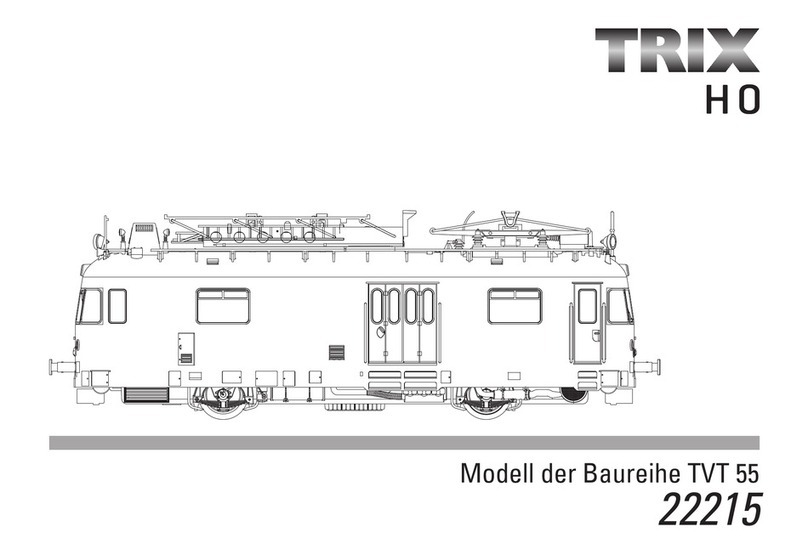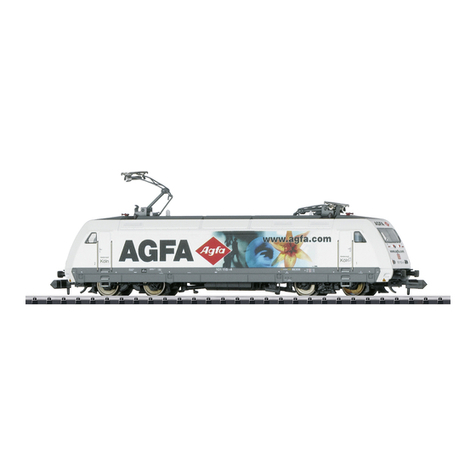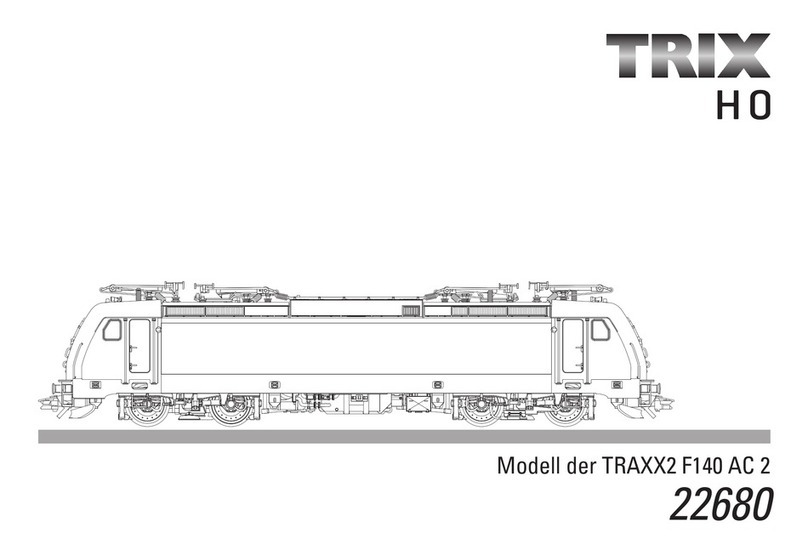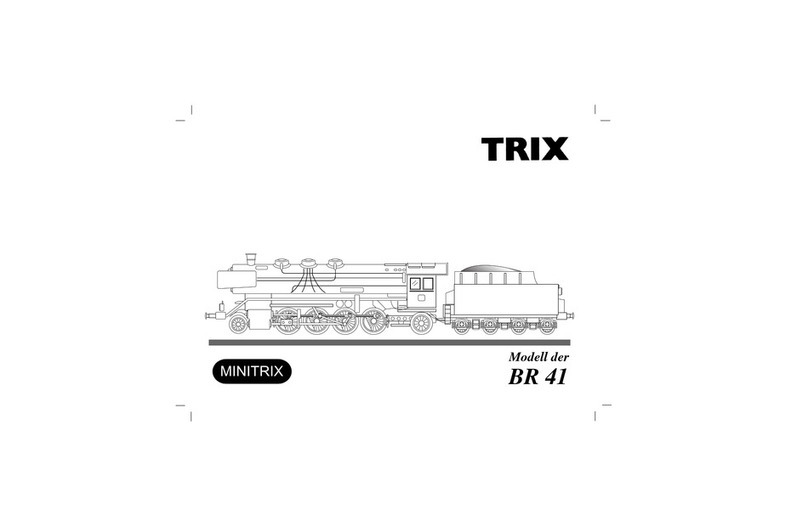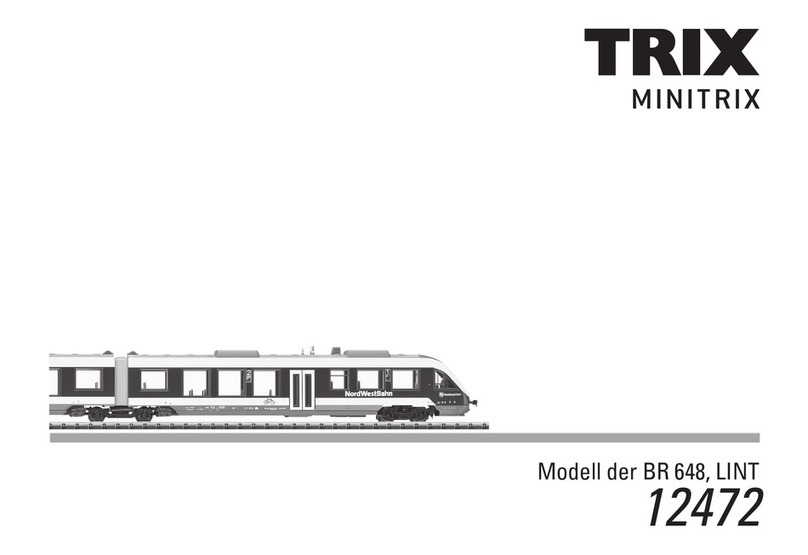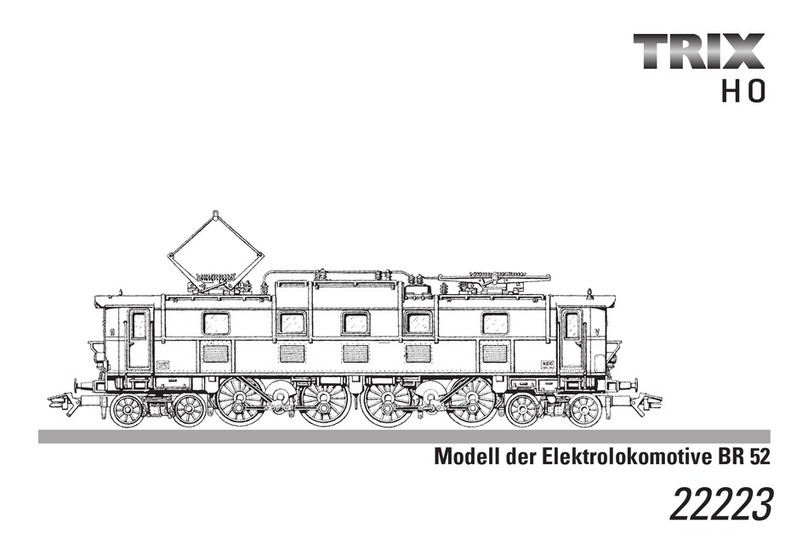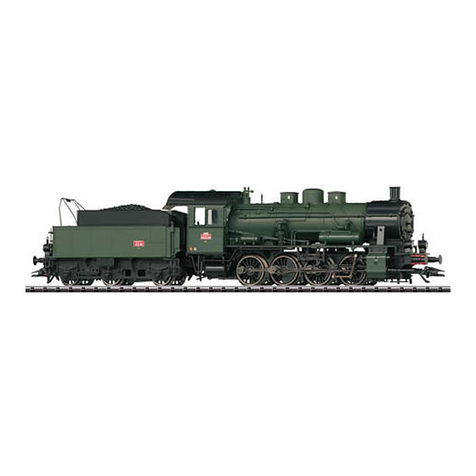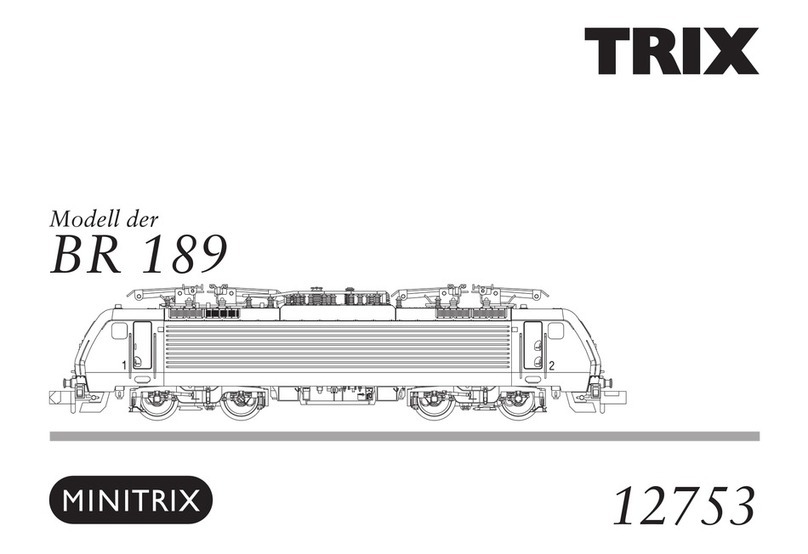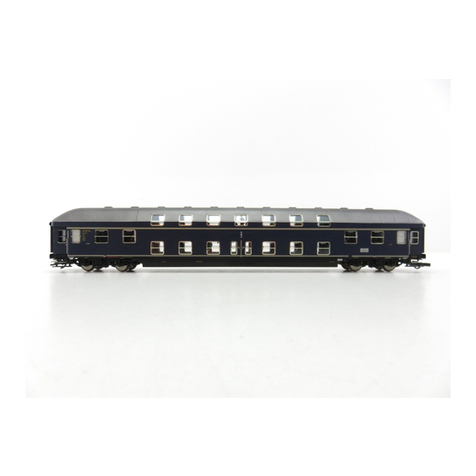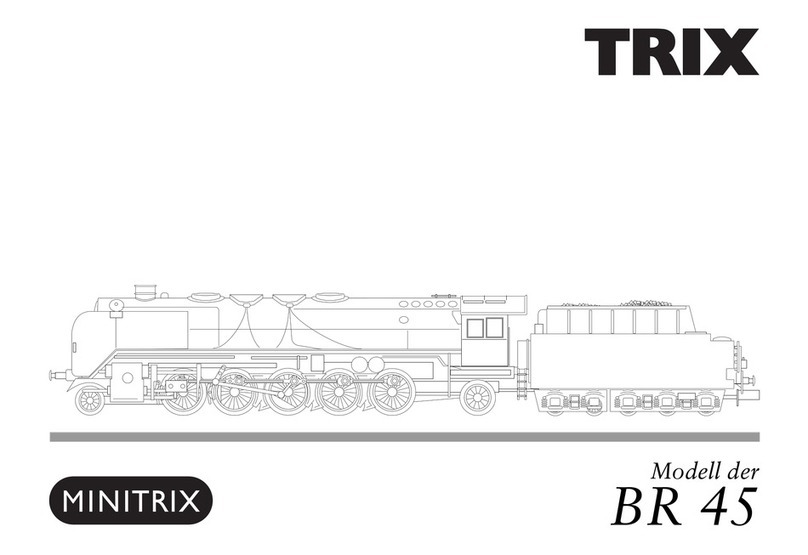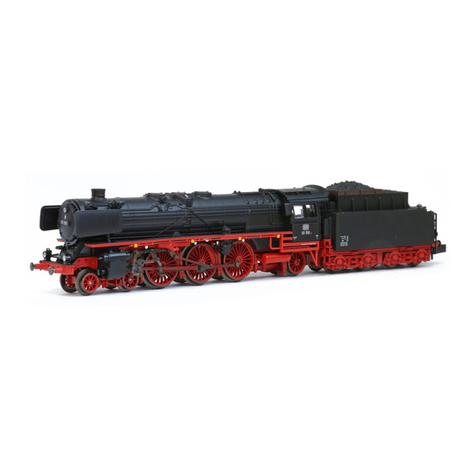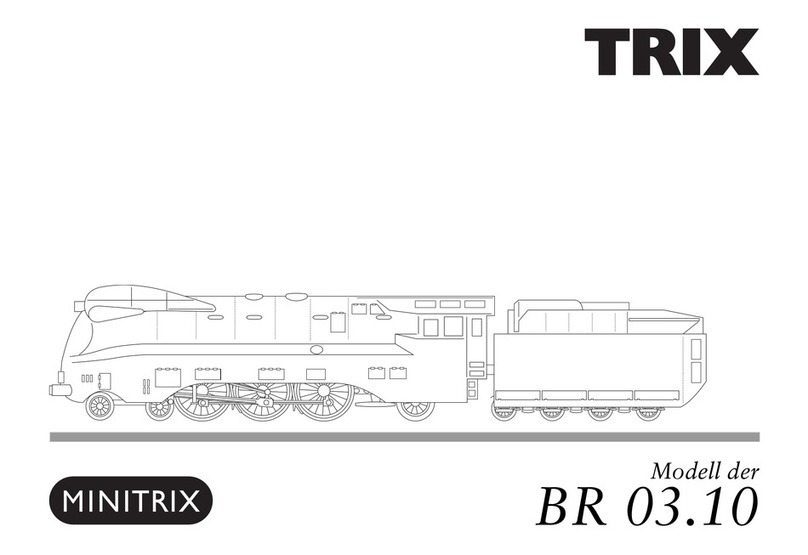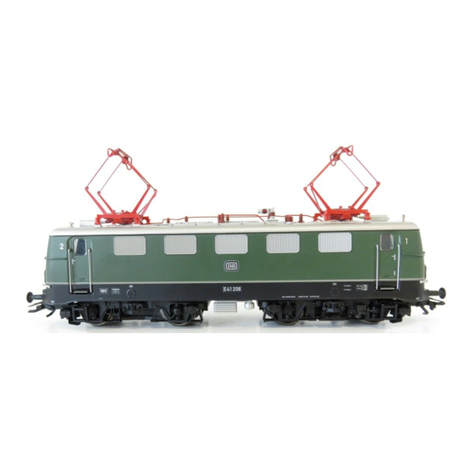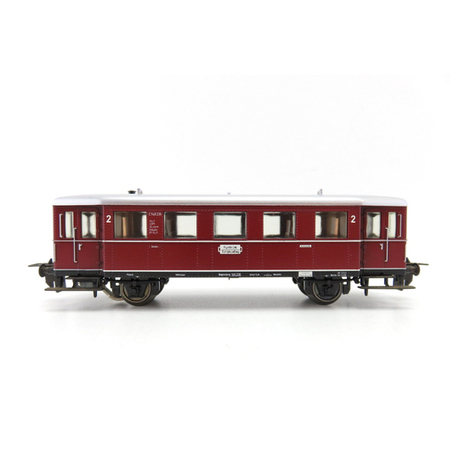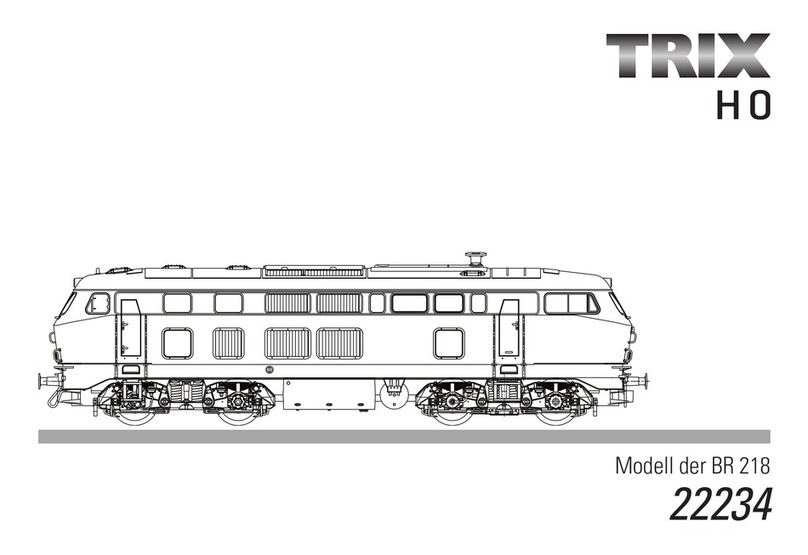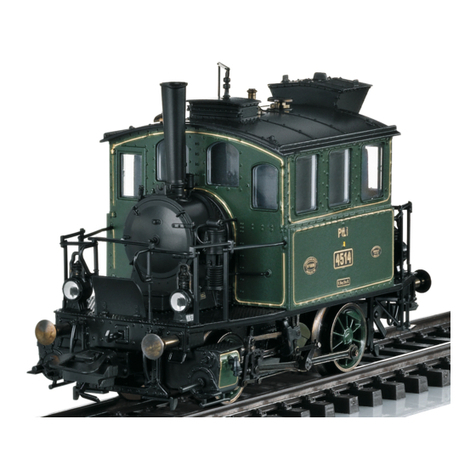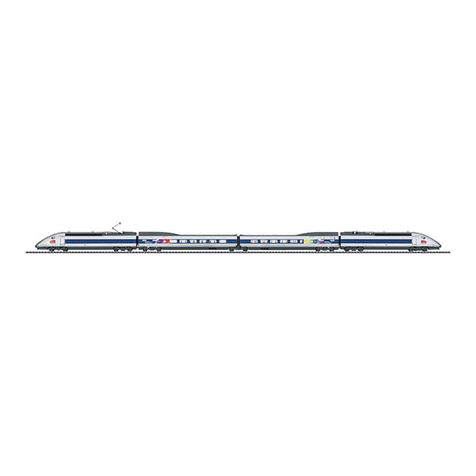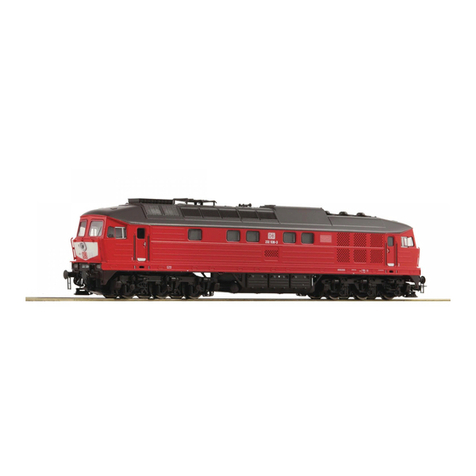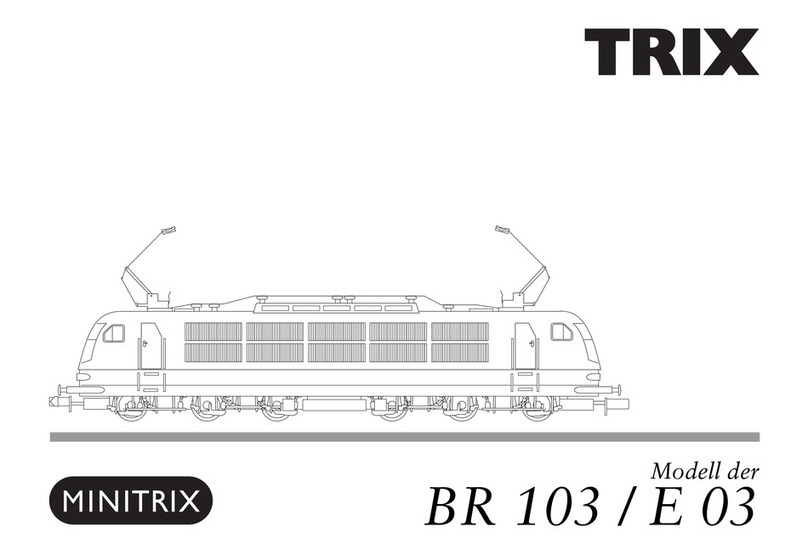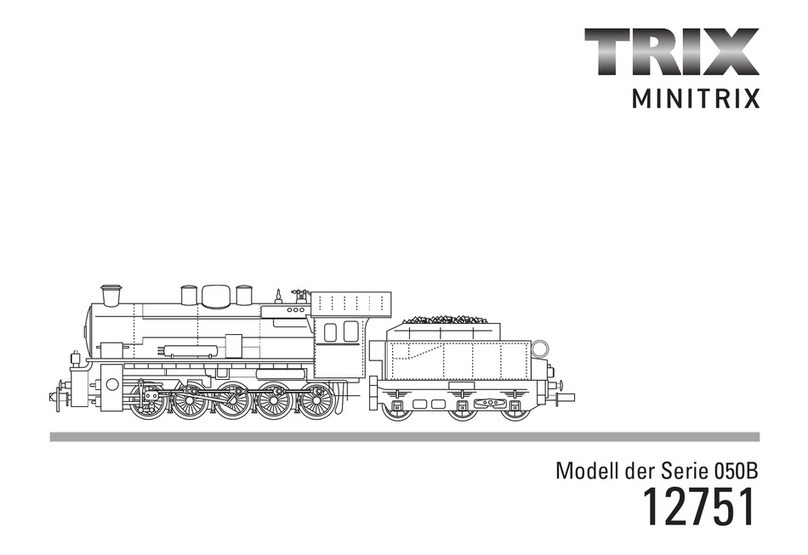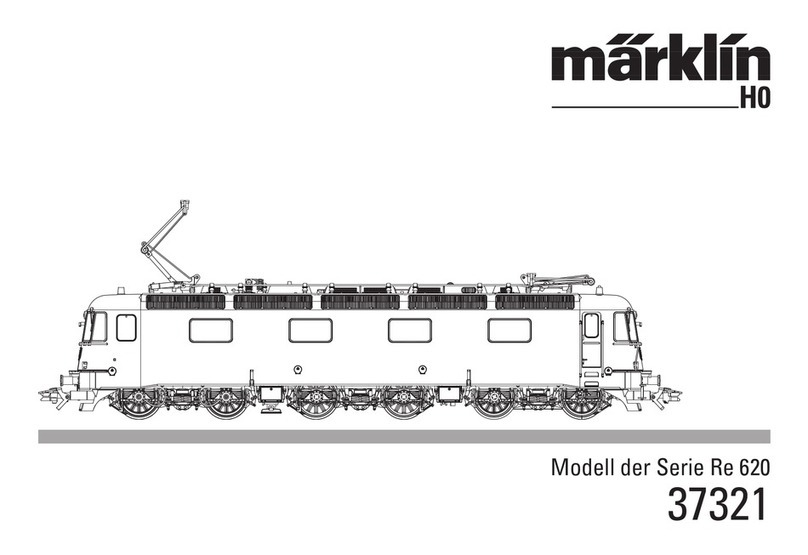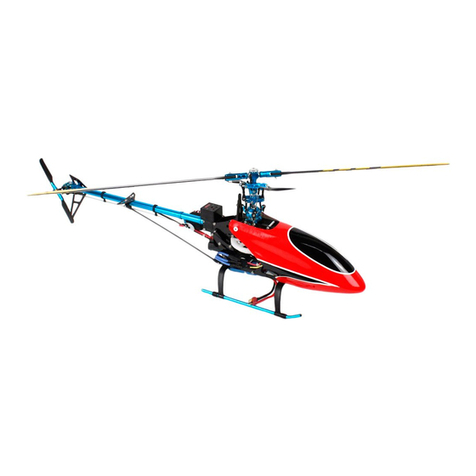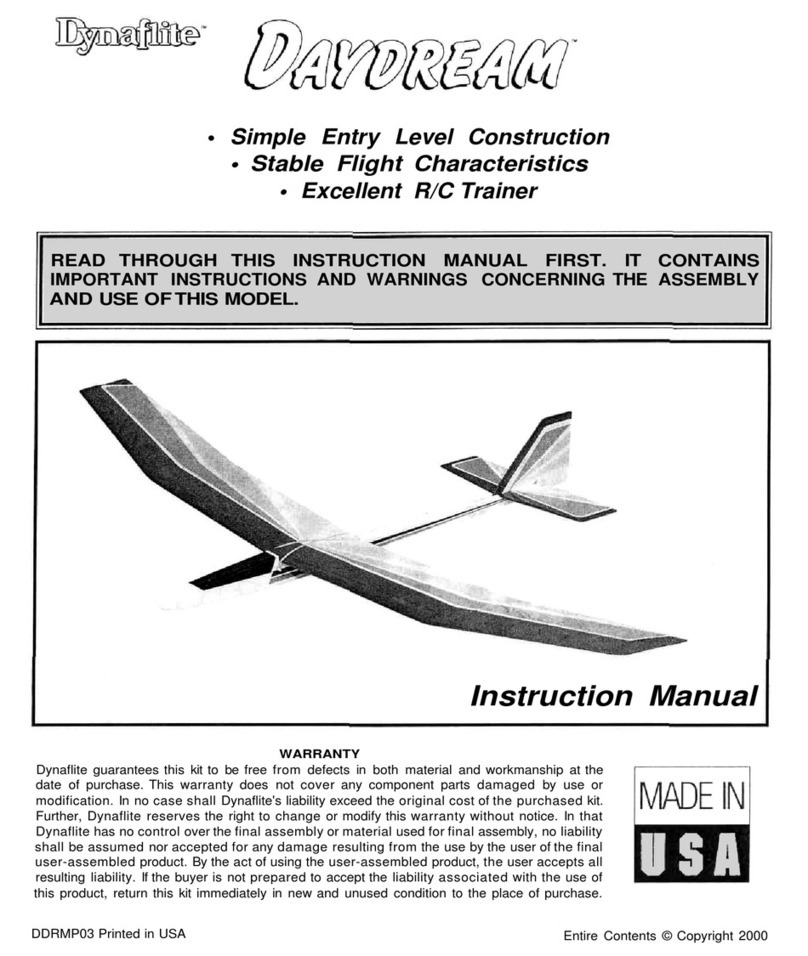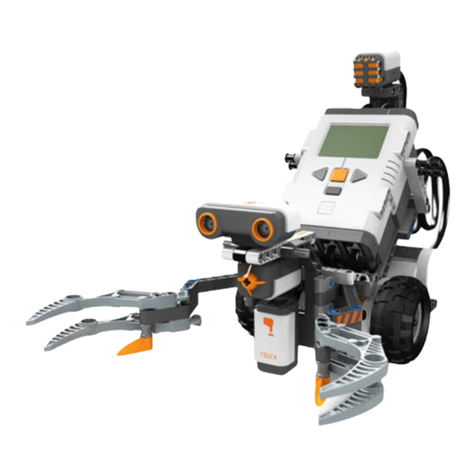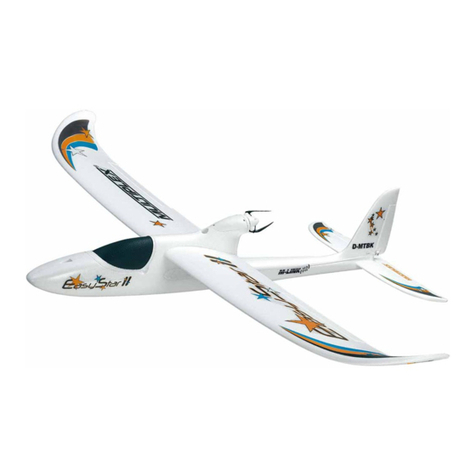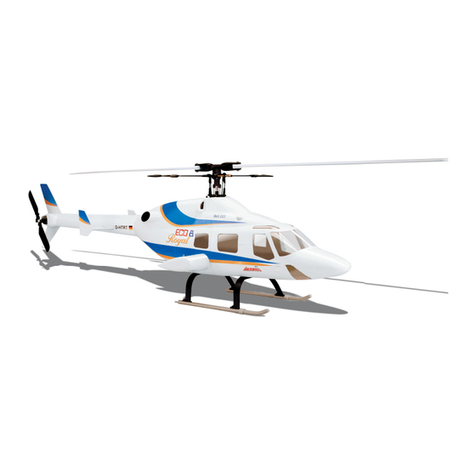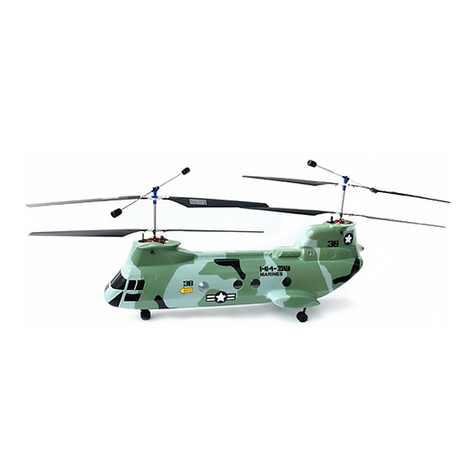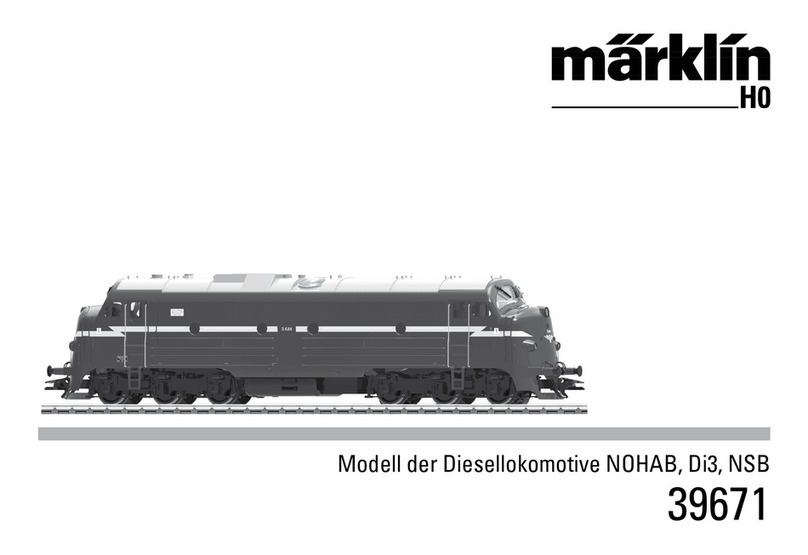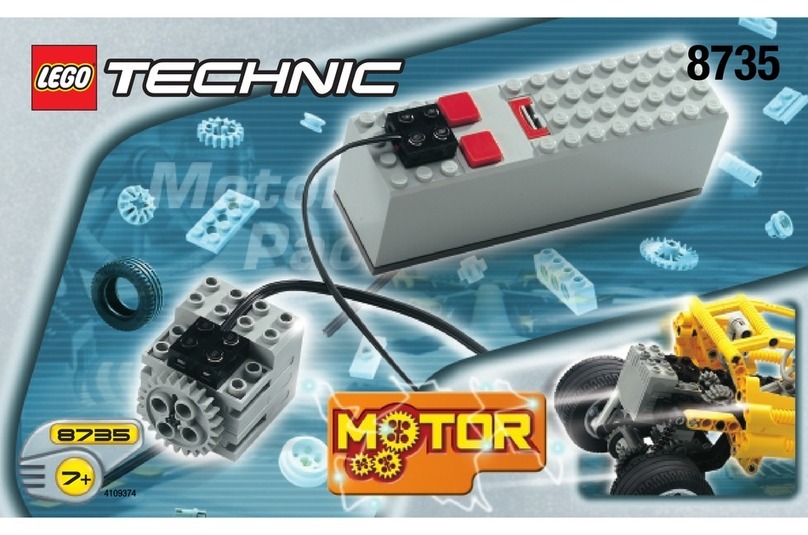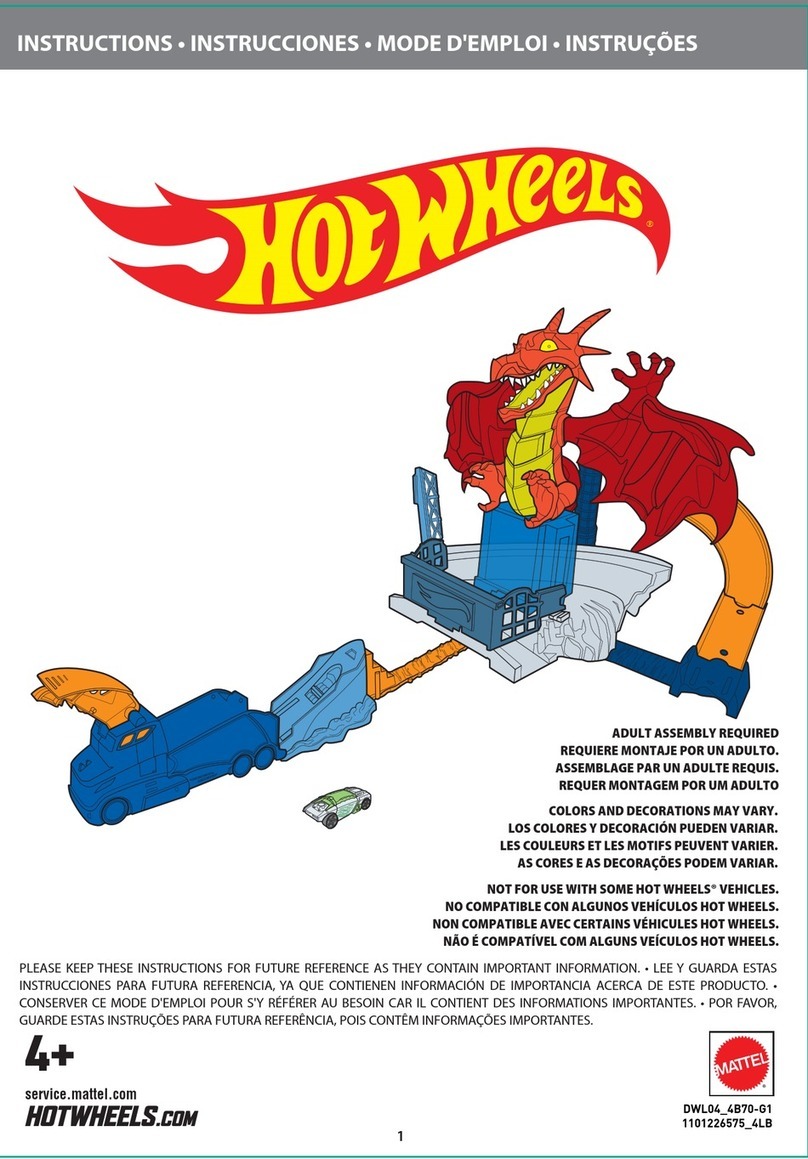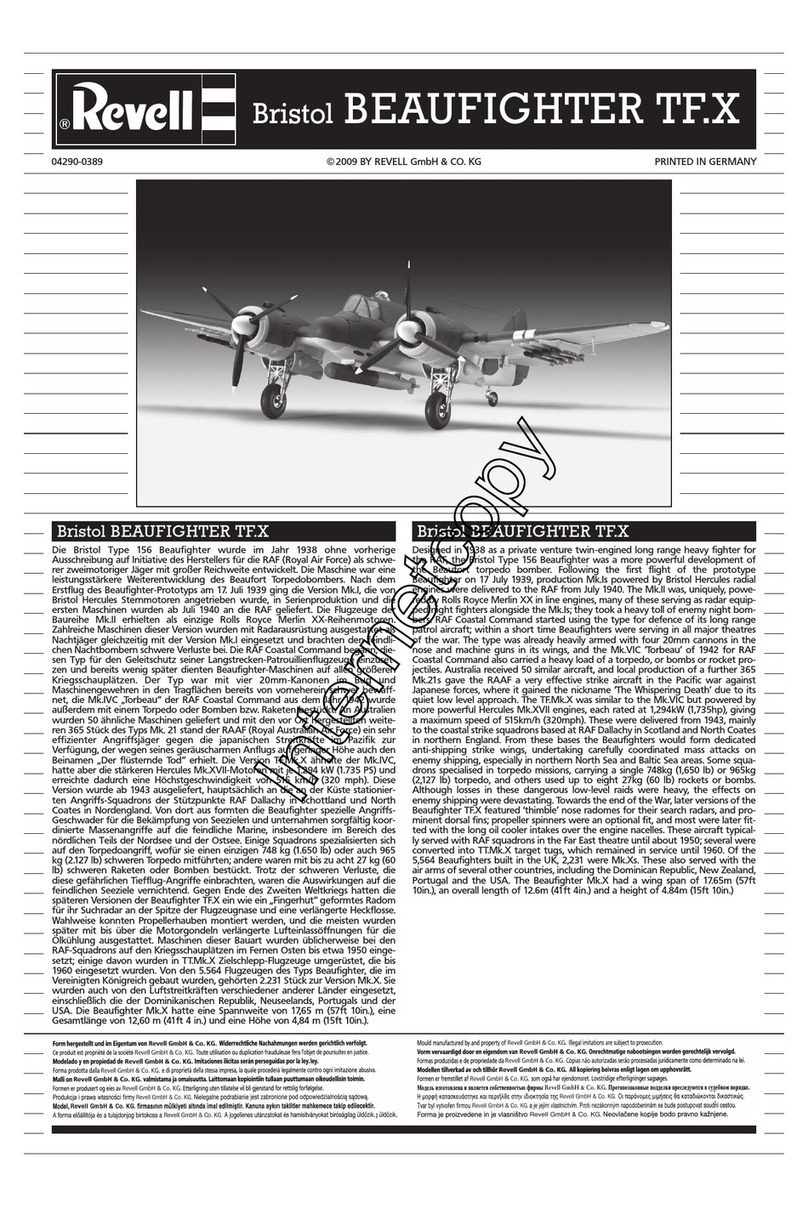5
BR 232 / 234 - Ludmilla en Allemagne
Contrairement à l‘Ouest où l‘on favorisait la traction électrique,
l‘Est misait essentiellement sur les locomotives diesel afin de
remplacer la traction vapeur, non rentable. Entre 1972 et 1982
furent acquises pour la Deutsche Reichsbahn de la RDA, en
accord avec la RGW, plusieurs séries d‘une nouvelle famille
de grosses locomotives diesel en provenance de Russie,
dont l‘actuelle série 232 de la Deutsche Bahn AG. Avec ses 6
moteurs de traction, cette énorme locomotive diesel-électrique
à six essieux, de presque 21 mètres de long, peut fournir une
puissance continue allant jusqu‘à 2940 kW selon la série et une
vitesse maximale de 140 km/h. En RDA, ces locomotives étaient
utilisées pour remorquer aussi bien des trains marchandises
que des trains voyageurs rapides. Le poids de celles-ci et leur
charge par essieu de 20 t ne permettaient toutefois pas une
utilisation sur tout le réseau et en fonction de l‘armement de
certaines sections de ligne, la DR devait recourir aux séries
118 et 119. Le personnel de la DR surnomma la machine russe
«Ludmilla», inventé paraît-il au dépôt Leipzig et aujourd‘hui
encore en usage pour cette famille de locomotive.
709 unités de la série 132, future BR 232, furent construites
et ont été reprises par la DB AG - entre autres en raison du
chauffage dont cette série fut équipée ; alors que les autres sé-
ries ont déjà été réformées ou vendues, celle-ci est encore en
service en de nombreux endroits . Certaines locomotives ont
également été rénovées de fond en comble et remotorisées.
Elles représentent aujourd‘hui les nouvelles séries 233, 234 et
241 et font leur service sur les rails allemands en compagnie
des «Ludmilla» russes de la série 232.
BR 232 / 234 - Ludmilla in Duitsland
In tegenstelling tot het Westen, waar men de voorkeur
aan de elektrische tractie gaf, zette het Oosten voor het
merendeel in op diesellocomotieven om het oneconomische
stoombedrijf af te lossen. Voor de Deutsche Reichsbahn in
de DDR werd in het akkoord met de RGW tussen 1972 en
1982 in meerdere series een nieuwe familie grote diesellocs
uit Russland, o.a. de huidige serie 232 van de Deutsche
Bahn AG, aangeschaft. Deze reusachtige, zesassige, bijna
21 meter lange, dieselelektrische loc heeft met haar 6
rijmotoren een continu vermogen, al naar serie, maximaal
2940 kW en een maximumsnelheid van 140 km/h. In de DDR
werden de locomotieven zowel voor goederentreinen als
voor sneltreinen ingezet. Hun hoge gewicht en hun asdruk
van 20t liet een gebruik over het hele land echter niet toe.
Het DR-personeel gaf de Russin de naam “Ludmilla“, die
kennelijk uit het depot Leipzig stamt en ook tegenwoordig
nog graag voor deze locomotieffamilie gebruikt wordt.
Van de serie 132, de latere BR 232, werden in totaal 709
machines gebouwd en ze werden - ook door de bij haar
ingebouwde treinverwarming door de DB AG overgenomen
en wordt op veel plaatsen nog ingezet, terwijl de andere se-
ries reeds buiten dienst gesteld of verkocht werden. Enkele
locomotieven werden ook in principe vernieuwd en opnieuw
gemotoriseerd. Ze vormen tegenwoordig de nieuwe series
233, 234 en 241 en bedienen samen met de Russische
Ludmilla‘s van de serie 232 diensten op Duitse rails.
